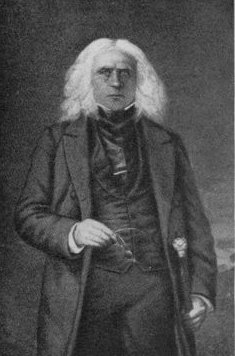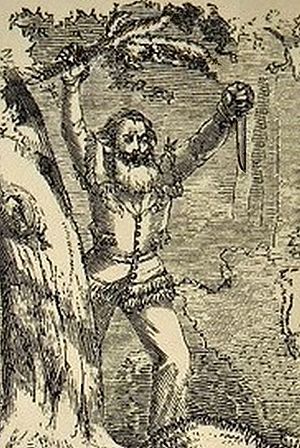Willamette Cattle Company facts for kids
| Date | 1837 |
|---|---|
| Location | Willamette Valley North America |
| Also known as | Wallamet or Willamet Cattle Company |
| Participants | Ewing Young and others |
The Willamette Cattle Company was a group formed in 1837 by early settlers in the Willamette Valley of what is now Oregon, United States. Their main goal was to buy cattle from Mexican California. They ended up buying nearly 750 cattle and 40 horses. Ewing Young led the group that drove these animals north back to the Willamette Valley.
Contents
Why the Company Was Formed
Before the Willamette Cattle Company, the Hudson's Bay Company (HBC) owned all the cattle in the area. John McLoughlin, a leader at the HBC, had an agreement with the settlers and missionaries. He would lend them pairs of livestock, but he never sold them. All the baby calves born from these animals also belonged to the HBC. For example, the Methodist Mission in Oregon received 16 cattle from McLoughlin in 1834.
In late 1836, a United States Navy officer named William A. Slacum arrived in the region. He was sent by the U.S. government to learn about the settlements and Native American villages. McLoughlin welcomed him and introduced him to Jason Lee, a missionary. Slacum talked to many settlers about their livestock. He noticed that the settlers depended completely on the Hudson's Bay Company for cattle. To help them become more independent, Slacum suggested they buy cattle from Alta California.
Making the Agreement
In January 1837, various settlers decided to create a company to buy cattle. This group included missionaries like Jason Lee, former French-Canadian employees of the HBC, and American pioneers. They agreed that some men would sail on the Loriot to California to buy as many cattle as possible.
The official agreement was signed on January 13, 1837, at a place called Campment du Sable, near what is now Champoeg. The plan was to drive the cattle overland back to the Willamette Valley. Once there, the cattle would be divided among the investors based on how much money each person had put into the company. The company would pay the travelers $1 a day for their expenses and $20 a month in wages, paid in cattle.
Ewing Young was chosen to lead the trip to California, and Philip Leget Edwards became the treasurer. It's important to know that McLoughlin, the HBC leader, actually helped the company a lot. He bought half of all the available shares in the company, showing his support for the settlers.
Who Was Involved
Many people invested in the Willamette Cattle Company. Some just invested money, while others also joined the difficult cattle drive.
- Investors only:
* John McLoughlin * Jason Lee * William Slacum * James A. O'Neil * Webley John Hauxhurst
- Investors and participants in the cattle drive:
* Ewing Young (leader) * William J. Bailey * Lawrence Carmichael * Pierre De Puis * Philip Leget Edwards (treasurer) * Emert Ergnette * George Gay * Calvin Tibbets * John Turner
The Long Journey
On January 22, 1837, the group of eleven men and three Native American boys began their journey. They sailed on the Loriot from Wappatoo Island (now Sauvie Island) on the Willamette River. They reached San Francisco in March. However, to buy cattle, they needed permission directly from Governor Juan Bautista Alvarado, who lived in Santa Barbara.
Ewing Young traveled to Santa Barbara and received permission from Governor Alvarado to buy cattle. The governor said they could only buy cattle from herds owned by the government. Young then returned north and met the rest of the group in Monterey on May 12, 1837. The Willamette Cattle Company then bought 746 cattle for $3 each and 40 horses for $12 each. The animals were located in two different places.
Driving the Cattle North
In June, after getting enough cattle, the group started driving them north back to the Willamette Valley. On July 27, they began traveling through the Sacramento Valley. There was a small delay because their gunpowder got wet, and a few men had to go back to San Francisco to buy more. They traveled through the hot summer and crossed the Siskiyou Mountains in northern California and southern Oregon.
On September 14, they crossed the Shasta River and met some Shasta natives, who greeted them kindly. A Shasta boy, about ten years old, even walked with the cattle company for a day. Sadly, during this part of the journey, some of the men in the group had conflicts with Native Americans. This caused tension and anger among the cattle drivers.
The next day, the situation became even more difficult among the settlers. Some men, including Gay, Bailey, Carmichael, and Turner, became aggressive and refused to follow Young's orders. There was a tense argument with threats. However, Young was able to regain control, and the group continued driving the cattle north.
Finally, in October, they returned to the settlements in the Willamette Valley. They arrived with about 630 cattle and 15 horses. Some animals were lost due to natural causes, some were killed by Native Americans, at least one was killed by the group for food, and others simply wandered off. The remaining animals were then divided among the investors. Each animal was valued at $8.50. Ewing Young received the largest share, with 135 cattle. The total expenses for the trip to California were $42.75, and about 200 cattle were lost during the journey.
What Happened Next
Getting these cattle helped the settlers become less dependent on the Hudson's Bay Company. Ewing Young became the wealthiest settler because of his role in the company. After he passed away in 1841 without any direct heirs, his wealth led to discussions about forming a local government to manage his property.
Even with over 600 cattle among the approximately 500 European settlers in the valley, there was still a high demand for more livestock. Because of this, the settlers later came up with another clever plan called the Star of Oregon between 1840 and 1843 to get even more cattle.



